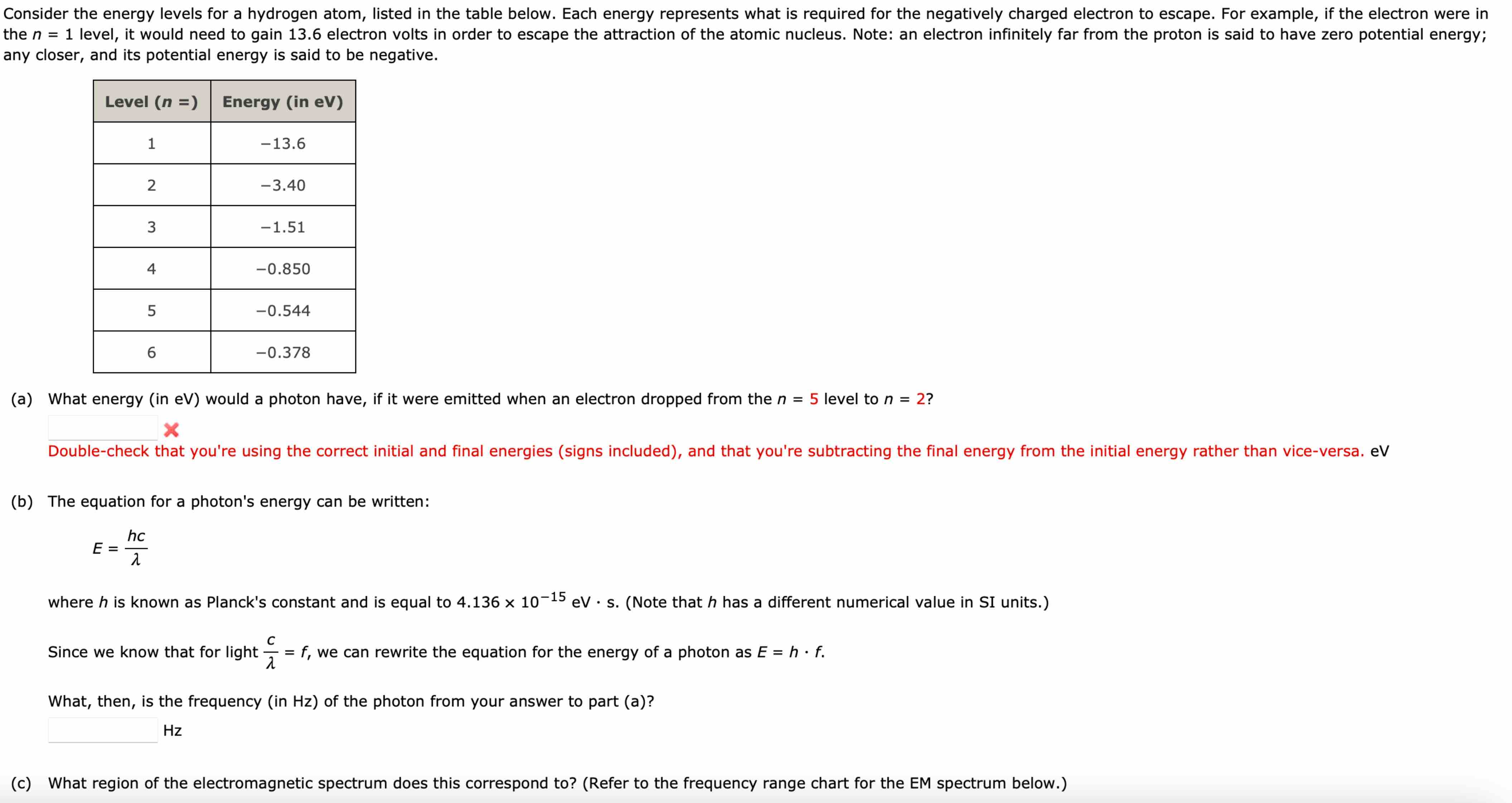Answered step by step
Verified Expert Solution
Question
1 Approved Answer
Consider the energy levels for a hydrogen atom, listed in the table below. Each energy represents what is required for the negatively charged electron

Consider the energy levels for a hydrogen atom, listed in the table below. Each energy represents what is required for the negatively charged electron to escape. For example, if the electron were in the n = 1 level, it would need to gain 13.6 electron volts in order to escape the attraction of the atomic nucleus. Note: an electron infinitely far from the proton is said to have zero potential energy; any closer, and its potential energy is said to be negative. Level (n =) 1 E 2 3 4 5 6 Energy (in eV) - 13.6 -3.40 -1.51 -0.850 -0.544 -0.378 (a) What energy (in eV) would a photon have, if it were emitted when an electron dropped from the n = 5 level to n = 2? X Double-check that you're using the correct initial and final energies (signs included), and that you're subtracting the final energy from the initial energy rather than vice-versa. eV (b) The equation for a photon's energy can be written: hc where h is known as Planck's constant and is equal to 4.136 x 10-15 eV s. (Note that h has a different numerical value in SI units.) C Since we know that for light=f, we can rewrite the equation for the energy of a photon as E = h f. What, then, is the frequency (in Hz) of the photon from your answer to part (a)? Hz (c) What region of the electromagnetic spectrum does this correspond to? (Refer to the frequency range chart for the EM spectrum below.)
Step by Step Solution
There are 3 Steps involved in it
Step: 1
Solving for the Photon Energy and Frequency in a Hydrogen Emission a Photon Energy To find the energ...
Get Instant Access to Expert-Tailored Solutions
See step-by-step solutions with expert insights and AI powered tools for academic success
Step: 2

Step: 3

Ace Your Homework with AI
Get the answers you need in no time with our AI-driven, step-by-step assistance
Get Started


